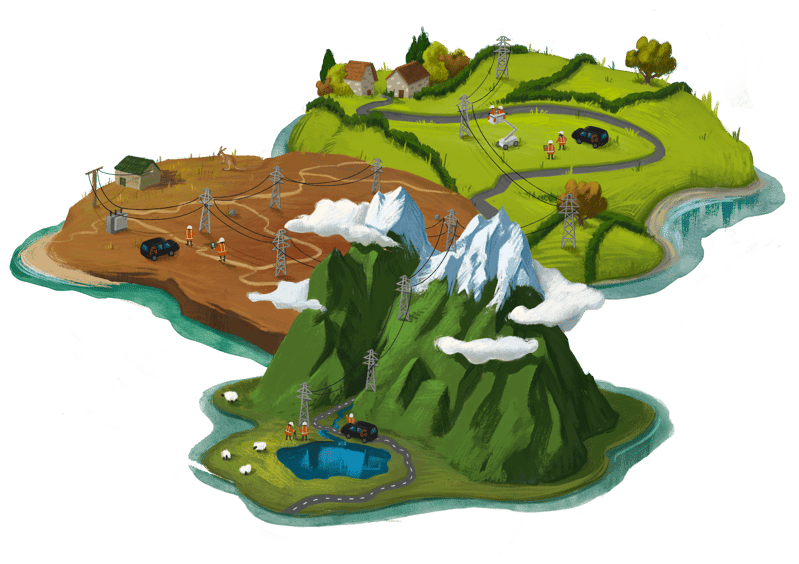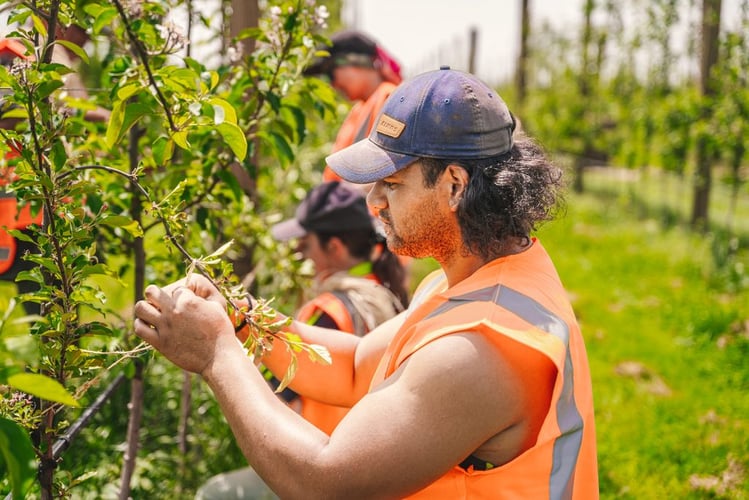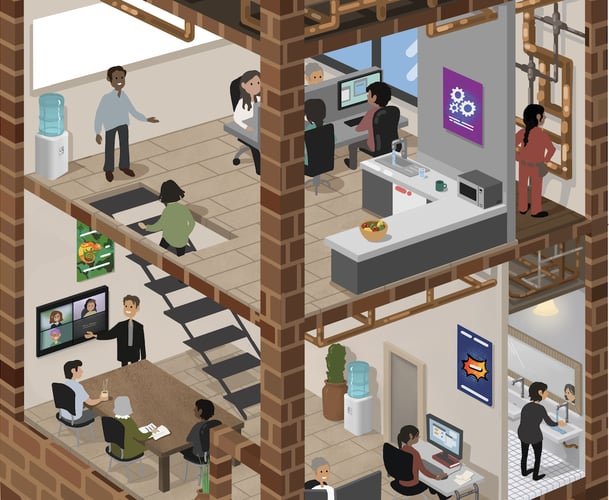
Groundline Engineering Limited (Groundline) is a global engineering consultancy. Established in 2004, they have offices in New Zealand, Australia, the UK and USA. They provide transmission and distribution lines’ engineering services to network operators and service providers and are known for bringing creative thinking to projects to ensure solutions are cost-effective, resilient, safe and good for the planet.
They have two further product-businesses – Thor Poletest for fast, non-destructive diagnostics of timber telecommunications and power poles and Covered Conductor Solutions, which reduces wildfire and bushfire risk.
What Was The Challenge That Brought You to AGLX?
Groundline had come to the end of their current three-year strategic period and were looking to develop a strategy for the next stage of their business growth.
Managing Director, Richi Cleland said they wanted to take a fresh approach to avoid simply ending up with a refresh of the previous strategy. He also wanted to move away from the approach taken by larger consulting firms, who he saw as using traditional, ‘cookie-cutter’ methods. Richi says they wanted a different perspective and to allow for more input from their team.
Groundline were working with New Zealand Trade and Enterprise (NZTE) who recommended AGLX as providing an innovative and fresh approach to developing and implementing strategy.
Richi felt AGLX’s Adaptive Strategy methodology seemed to be the right approach for them.
What Did You Do with AGLX?
Richi says, right from the outset, the approach to developing a strategy was totally different.
The process involved deep-diving into the team’s hopes, fears, perceptions, what they liked about what they were already doing and external influences, all of which enabled them to gain a better understanding of the company and really acknowledge what people were thinking. They looked at both the big picture and the detail of what they needed to change.
AGLX split the team into two groups, encouraging different trains of thought which prevented ‘groupthink’ and fostered fresh ideas and perspectives.
Kyle James, General Manger Consulting, Australia & NZ enjoyed the sessions and found them different from anything he’d experienced before, with lots of moving around and interaction.
The process challenged Groundline to think about their future vision, but also to address their concerns, emotions and how they would achieve their goals.
“I really liked the ‘future backwards’ approach,” said Richi. “It was a real differentiator – a completely different methodology to anything we’d done before.”
AGLX also introduced the principle of Objectives and Key Results (OKRs) and Safe-to-Fail experimentation, identifying go/no-go decision points which allowed the team to “fail fast and move on.”

Groundline’s Visual Strategy
What Have Been the Outcomes of the Engagement?
Richi says the strategy development sessions with AGLX led to a more holistic approach to Groundline's strategy. It got them thinking more about innovation and to focus on what their actual expertise is than they had before.
Rather than focusing on short-term goals and office locations, they emphasised being a global company with experts in the field.
Kyle reflects that the approach means the leadership team now have a shared understanding of what they are doing, whereas prior strategies felt siloed, with a lack of visibility across areas.
He says,
“We now have a shared view of the overall direction and much better clarity.”
The ‘future backwards’ approach forced the team to understand what they needed to change in the business today and uncovered areas that they had never talked about before, including succession planning.
AGLX helped Groundline gain direction and clarity, particularly when faced with challenges. Richi says it helped them “reset the compass.”
Each team was then able to develop their own plan, resulting in greater ownership and accountability.
The leadership team now create quarterly focus areas which they review monthly. They regroup quarterly to review the strategy against changes in the market, meaning they are a lot more flexible than they were previously, but still within the strategic direction.
Richi says the process has enabled him to step away from operations, empowering the team to deliver. He is now freed-up to look more at what the overall organisation needs and prioritise his focus, rather than reacting to what’s ‘urgent’.
The senior leadership team have felt much more engaged in strategy and direction than before and the wider team have also been more interested in their overall direction. Having 3 key objectives across the business has been much easier to communicate and the visual presentation has been a great tool when talking with staff and clients.
The concept of ‘safe to fail’ enabled Groundline to make informed decisions about pursuing opportunities and quickly moving on from failures.
Overall, the team found the approach refreshing. It has given them both a strategy and a strategic approach which is dynamic and enables the team to review and recorrect if needed.
The approach aligned well with how Groundline operated as a business, providing clarity, accountability and strategic guidance.
Does this sound interesting?
If you would like to talk with us about how we can help your organisation build capability for an adaptive and experiment-orientated approach, then get in touch. We love working with leaders who are looking to challenge the status quo and realise fresh thinking is needed.




